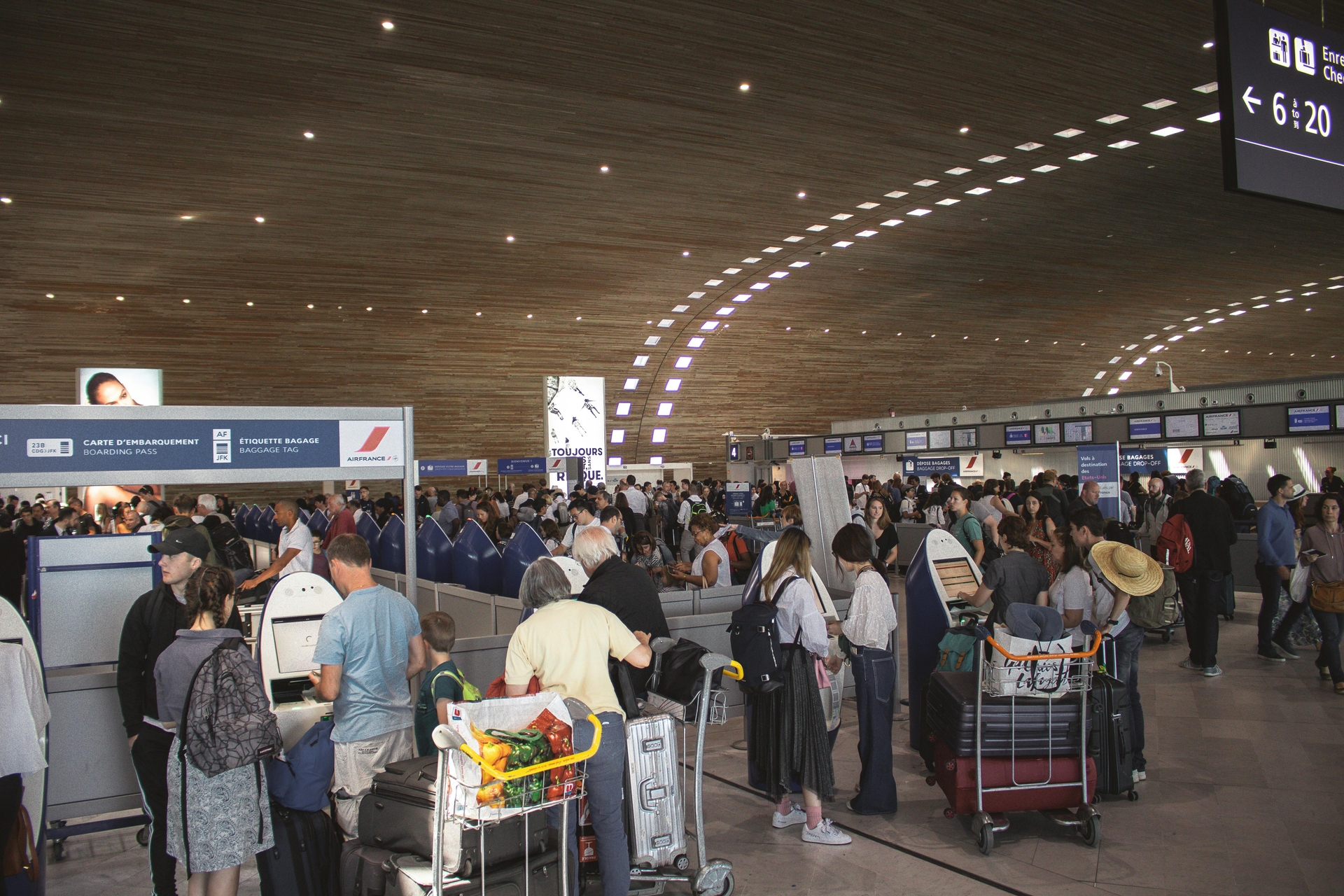
AeroGenie — Your Intelligent Copilot.
Aviation Maintenance Trends That May Gain Momentum in Uncertain Circumstances

Aircraft are staying in service longer, supply chains are a powder keg, and the tech is evolving overnight. Discover the maintenance trends gaining momentum and what they mean for operators trying to stay airborne and profitable.
The pressure is on
The aviation industry has always been high-stakes, but 2025 introduces a new set of pressures. Supply chains are still rocky. OEMs are behind on aircraft deliveries. Labor shortages are colliding with aging fleets. And regulatory and sustainability obligations are pushing operators to innovate, whether they're ready or not.
While some carriers play catch-up, others are doubling down on smarter maintenance as a strategic advantage. With this mindset, what used to be long-term planning is now an urgent need. Here are the latest aviation maintenance trends gaining momentum, and a look at what they mean for airlines, MROs, and other aviation companies navigating today's unpredictable skies.
1. Predictive maintenance gets smarter
Predictive maintenance is fast becoming a necessity. With airlines dealing with tariffs, part shortages, and tight schedules, unplanned downtime can cost thousands of dollars per hour. That’s why machine learning and AI-powered tools are being used to anticipate failures before they happen and to optimize preventative maintenance planning.
According to a McKinsey survey of MRO executives, 56% said predictive maintenance is one of their top digital priorities for the next three to five years. These tools help identify and plan for nonroutine issues before they become disruptions (McKinsey & Company: Aircraft MRO 2.0).
Companies like Bombardier are applying AI to real-world maintenance problems. Their Smart Link Plus platform monitors real-time flight and engine data, helping crews prioritize MRO tasks and reduce downtime. Maintenance recommendations are automatically generated and transmitted, and mechanics are dispatched faster, based on real need, not rigid calendar schedules (Aviation International News).
At the fleet level, deep learning and Bayesian models are starting to analyze sensor output, detect failure patterns, and even suggest likely causes (National Business Aviation Association). As these systems mature, the result is better part inventory projections, less guesswork, and leaner MRO operations.
2. Digitalization isn’t optional anymore
Paper logs and spreadsheets are still used, but with fleets growing more complex and inventory pipelines more constrained, maintenance teams need real-time signals and integrated systems for better visibility across operations.
Digital MRO platforms are leading that charge. From cloud-based maintenance dashboards to AI-generated job cards, digital tools are streamlining documentation, improving worker safety, and accelerating compliance tasks.
Despite these wins, adoption remains inconsistent. While half of MRO organizations say they’ve launched multiple digital pilots, only 6% have scaled digital transformation across their organization, according to McKinsey.
Meanwhile, major players like Deloitte are taking things a step further by applying process mining to aviation maintenance. Their real-time analytics platforms help MROs identify operational bottlenecks, optimize resource allocation, and improve spare parts planning—all based on actual data flow, not assumptions (Deloitte).
3. The skilled labor gap becomes a crisis
The MRO industry isn't just short-staffed—it’s standing at the edge of a demographic cliff. Nearly 30% of aviation mechanics are over the age of 60, and new entrants aren’t keeping pace. By 2027, the U.S. could face a shortfall of over 43,000 aviation maintenance workers, amounting to more than 24% of total workforce demand (Oliver Wyman).
Beyond being a staffing nightmare, it’s a major safety and scheduling issue. As more seasoned professionals retire, delays, cancellations, and operational risks will rise, particularly for regional airlines and independent MROs that often serve as entry points for new mechanics.
Companies are responding with creative solutions. StandardAero, for instance, is using augmented reality (AR) glasses to support technician training and remote inspections. Trainees can watch a borescope examination in real-time, while senior techs monitor the process remotely and offer guidance.
Others are embracing virtual reality (VR), AI-driven scheduling tools, and broader DE&I recruiting efforts to appeal to Gen Z workers, many of whom are looking for high-tech, purpose-driven career paths. But unless hiring and retention improve soon, MRO providers may be forced to rethink how they distribute workloads and deliver services.
4. Old planes, new problems
Aircraft are sticking around longer than expected. Supply chain delays, long OEM backlogs, and “teething issues” with next-gen engines have all forced airlines to extend the life of older fleets. According to a McKinsey study, aircraft retirements are 24% lower between 2024 and 2026 than in the pre-pandemic years (McKinsey & Company: Aerospace and Defense).
That might keep planes in the air, but it pushes maintenance needs through the roof. Older aircraft require more frequent safety checks, more parts replacements, and deeper structural checks. This market pull increases the workload on already understaffed MRO teams and strains the availability of used serviceable material (USM), which traditionally helps reduce repair costs.
As retirements slow and feedstock dwindles, airlines and lessors are paying more for parts and waiting longer to get them. Some MROs are adjusting by cannibalizing older airframes for components, but that’s a short-term fix. In the long run, better demand forecasting and inventory planning—powered by AI—will be essential to stay ahead of outages.
5. Green maintenance isn’t just PR
Sustainability in aviation is no longer confined to the fuel tank. Maintenance operations themselves are being scrutinized for their environmental footprint, and critical pressure is coming from regulators, passengers, and the industry alike.
MROs are responding in multiple ways:
- Switching to biodegradable cleaning agents
- Recycling airframe and engine parts
- Reducing paper waste through digitalization
- Optimizing engine performance for fuel efficiency
Companies report that sustainable aviation practices are increasingly becoming part of their operational model (STS Aviation Group). Meanwhile, Bombardier is using AI to improve spare parts forecasting, minimizing the emissions from rush orders and unnecessary groundings.
Digital twins are also helping fleets simulate changes to maintenance processes before implementing them in real life, reducing waste and risk. As the aviation industry pushes toward net-zero targets by 2050, sustainability in MRO will need to go beyond compliance and become a key driver of operational excellence.
6. Drones, cobots, and automation on the rise
The aviation maintenance world is no stranger to robots, but what’s new is how cohesively automation is being woven into everyday frameworks. From drones that perform exterior inspections to collaborative robots (“cobots”) that aid technicians on the ground, MRO operations are getting faster, safer, and more standardized.
For example, Pratt & Whitney has introduced a cobot quality control system that autonomously photographs engines from multiple angles during pre-induction checks. What used to vary widely in quality depending on the technician can now be done at the press of a button—with high-resolution consistency and audit-ready documentation.
Meanwhile, companies like Donecle and StandardAero are using drones to conduct aircraft fuselage inspections, cutting down what used to be multi-hour jobs into just 20 minutes—without scaffolding or ladders. These safety evaluations aren't just faster; they also reduce safety risks to workers and minimize aircraft downtime.
As AI and image recognition mature, these automated tools will soon go beyond detection to diagnosis, identifying corrosion, micro-cracks, or wear patterns in real time. The next frontier may well be autonomous repair bots and fully remote maintenance teams, particularly for smaller, regional aircraft and military applications.
7. The economics of maintenance shift
MRO is becoming a bigger business. The global aircraft maintenance market is projected to grow from $92.23 billion in 2025 to $144.97 billion by 2034, an impressive CAGR of 5.16% (Precedence Research).
A few trends are driving that growth:
- Airlines are flying more, often with older planes.
- Engine and component complexity is rising.
- Maintenance standards are tightening across regions.
The engine segment currently holds the largest share of the market, but component maintenance is expected to grow fastest, largely due to more specialized systems and avionics in modern aircraft.
Narrow-body aircraft continue to flood the skies, especially for short-haul and regional routes. However, wide-body aircraft are catching up, particularly in long-haul markets, where more frequent checks and costly overhauls drive up per-aircraft spend.
Geographically, Asia Pacific leads the global market with 30% of total revenue share in 2024 and is projected to retain dominance due to surging air travel demand and regional fleet growth. But North America is expected to grow the fastest, driven by faster connected-technology adoption and tighter FAA compliance standards.
For MROs, these economics present a clear call to action: embrace high-efficiency operations, form partnerships with OEMs, and invest in the tech stack that enables smarter, leaner maintenance cycles.
8. Risk resilience and process optimization
With geopolitical tensions, unpredictable parts availability, and rising costs, operational resilience has become just as critical as technical accuracy. MROs are leaning hard into process automation.
Here, process mining is key. Process mining is a data-driven discipline that closely examines actual procedural flows to uncover inefficiencies, predict bottlenecks, and fine-tune resource allocation. MRO companies are using process mining platforms like Celonis, combined with automation tools like UiPath and ServiceNow, to improve everything from parts ordering to technician assignment and compliance auditing (Deloitte).
This isn’t just an enterprise solution for Tier 1 airlines. Smaller MROs and regional players can benefit too, especially as cloud-based platforms make access and integration more affordable. In an uncertain world, having real-time visibility into your operations—and the ability to adapt them fast—is no longer a luxury.
FAQs
How are tariffs impacting aviation maintenance?
Tariff headwinds are significantly impacting aviation maintenance operations, introducing cost pressures and supply chain disruptions that affect both airlines and MRO providers. Recent U.S. tariffs on aviation-related imports, including aluminum and steel, have led to increased expenses for parts and materials essential to aircraft maintenance. These tariffs elevate direct costs and also exacerbate existing distribution network challenges (Flight Plan).
The ripple effects of these tariffs are prompting industry stakeholders to reassess their maintenance strategies.
Some airlines are considering relocating MRO activities to countries not subject to these tariffs as a cost offset. Additionally, there's a growing emphasis on diversifying supplier bases and investing in predictive maintenance technologies. These adjustments aim to navigate the specter of volatile tariff policies and maintain the consistency and reliability of aviation maintenance operations (Gamma Aviation).
Why is predictive maintenance becoming more urgent?
Because the variables you can’t control are stacking up fast: geopolitical tensions, raw material tariffs, extreme weather events, and regulatory mandates are all adding more turbulence to an unpredictable industry painfully prone to cycles of boom and bust.
In this environment, predictive maintenance is one of the few levers you can actually pull. Using AI and machine learning to anticipate failures before they happen allows teams to schedule service when it’s least disruptive, reduce costs, and avoid last-minute scrambles for parts or crew. It’s especially valuable for mixed fleets, where component variations make standardized maintenance harder, and where tailored, data-informed insights can keep diverse aircraft running in peak condition.
But even in uniform fleets like those favored by low-cost carriers (e.g., Ryanair’s 737-only approach), predictive tools help reduce redundancy, streamline checks, and manage part inventories with improved accuracy and fewer resources.
How are smaller operators adapting to all this new maintenance tech?
While large carriers may have more resources, smaller and regional operators are finding smart ways to adopt updated tools like drones for inspections, connected MRO platforms, or process mining software that doesn’t require massive infrastructure.
In short, smart, smaller operators are upgrading for greater agility. Companies that prioritize smarter work processes are starting to outpace legacy systems, regardless of budget.
Gazing ahead: Tech can’t replace strategy
The future of aviation maintenance is tech-enabled, but not tech-run. The industry is undergoing a structural shift, driven by necessity and opportunity: older planes need more care, future-ready tools promise scalable success, and workforce pipelines that can’t be rebuilt overnight.
AI, drones, augmented reality, digital twins, and predictive analytics are all exciting, but without smart implementation and workforce buy-in, they cannot solve for the sector’s biggest challenges. The winning MROs of the next decade won’t just automate tasks and update technology wily-nily; they’ll rethink the entire system for thoughtful updates for workflows to operate faster, leaner, and safer—in any environment.
Where ePlaneAI fits into the mix
At ePlaneAI, we help aviation companies and MRO providers future-proof their maintenance strategies through intelligent procurement with AI-driven inventory planning and blockchain-based parts traceability.
Whether you’re modernizing dated processes, improving fleet availability, or tackling workforce shortages, our platform delivers speed, trust, and operational clarity through solid predictive analytics and inventory management.
Don’t wait until your next supply chain disruption to modernize.→ Explore how ePlaneAI can help you stay ahead.
October 2, 2025
Choosing the Right Aircraft Parts with Damage Tolerance Analysis
The future of aviation safety is all about the parts. Authentic, traceable parts bring optimal damage tolerance and performance to fleets for maximum safety and procurement efficiency.

September 30, 2025
How to Enter New Aviation Markets: The Complete Guide for Parts Suppliers
Breaking into new aviation markets? Learn how suppliers can analyze demand, manage PMA parts, and build airline trust. A complete guide for global growth.

September 25, 2025
5 Aviation Marketing Strategies You Should Use to Sell to Global Airlines
Airlines face shrinking margins and rising expectations. See how top strategies—dynamic offers, partnerships, personalization, and more—can close deals with global carriers.

September 23, 2025
How AI Can Be Used for Dynamic Pricing in the Aviation Industry
Airlines are turning to AI for real-time fare adjustments—promising efficiency but raising concerns about fairness and transparency. From Delta’s experiments to regulatory pushback, discover how AI-driven dynamic pricing is reshaping aviation and what it means for passengers and the industry’s future.
